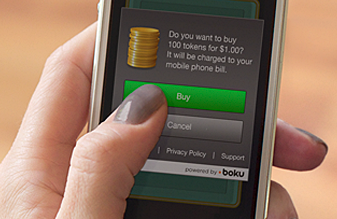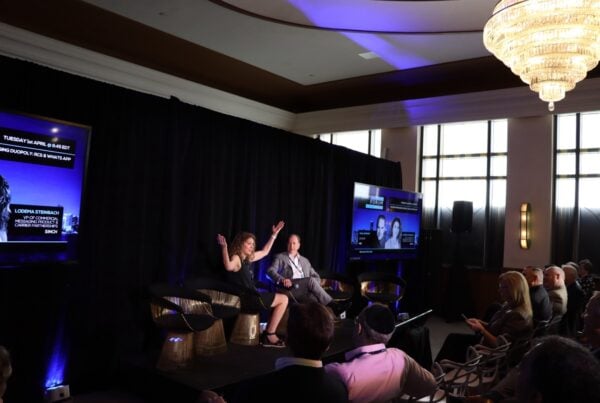Until recently, in Europe, direct carrier billing (AKA direct operator billing) was restricted to the purchase of digital goods and operated under an exemption to the European Union’s Payment Services Directive (PSD). This regulatory framework was largely established to deal with the purchase of ringtones and wallpapers. Now however, it’s possible for carrier billing providers to operate in full compliance with the PSD using an e-money licence, enabling carrier billing to be used for physical purchases, presenting a major new commerce opportunity.
MEF member Boku is one such company that has gone through the process of obtaining an e-money licence. Boku CEO, Jon Prideaux, took time out to explain the genesis of bringing its product to market and the opportunities the move presents.
What is Boku’s e-money and how does it extend your carrier billing business?
Up until now, carrier billing in Europe has operated under an exemption to an EU wide payments regulation called the Payment Services Directive (PSD), which has limited carrier billing to digital goods only. Boku’s new e-Money based version of carrier billing makes it possible for carrier billing to be used in full compliance with the PSD and thus for all types of goods and services, including physical goods and non-digital services. This greatly expands the range of merchants that can benefit from offering carrier billing as a payment method to their customers.
In terms of regulation what did the journey through compliance entail?
Boku secured an e-Money licence from the UK Financial Services Authority (now the Financial Conduct Authority) in 2012 and has passported it to all of the countries of the European Economic Area. The process of applying and receiving a licence is a lengthy one. With that said, receiving the licence is only part of the process. Most of our time has been spent obtaining a specific and detailed authorisation from the Financial Services Authority for a method that allows the e-Money licence to be used in such a way that the user experience of carrier billing is maintained and that frees carriers from the burden of meeting the requirements of Financial Services regulation.
 How have you implemented e-money as a strategy?
How have you implemented e-money as a strategy?
Our initial rollout of the new e-Money initiative is focused on the UK where the service is being offered in conjunction with O2, EE, and Vodafone. Over time, we will be rolling out the initiative across other parts of Europe. The first partners to utilize the service include IPC Media (which is selling physical magazine subscriptions using carrier billing) and Corethree (where train tickets via mobile applications will be paid for using carrier billing).
What types of goods and services can consumers buy with the e-money services?
One of the many benefits of e-Money based carrier billing is that it allows for carrier billing to be used for the purchase of any type of good, including physical goods and non-digital services. In Europe, carrier billing to date has been limited to digital goods only so this approach tremendously expands the range of applications for carrier billing.
Are there any use-cases that we can reference?
So far, we’ve announced partnerships with IPC Media (for the sale of physical magazines using Boku) and a partnership with Corethree, which will make it possible to purchase a train ticket in a mobile app using carrier billing. We will have many more announcements highlighting additional use cases in the coming year.
How do you expect this to change / grow over time?
Boku’s vision has always been to take carrier billing from virtual goods to digital goods to physical/general goods. The e-Money initiative has been key to helping us move into physical goods and it is an area that we expect to grow over time. With that said, tremendous opportunities remain in the virtual and digital goods areas, so we are continuing to invest in our offering for merchant partners in those areas as well.
Is carrier billing moving in to the purchase of physical goods space?
While it is true that consumers won’t likely be charging a television to their phone bills any time soon, the movement to use carrier billing to purchase everyday physical goods and services is underway and we expect this to be an area that will grow over time. We are targeting purchases where convenience is important and the price point is in the sub USD50 range.
What are the barriers to growing out an e-money business?
It takes time to get an e-Money authorisation and even those in possession of one must ensure that they have the assets, procedures, and technology necessary to comply with the requirements of the Payment Services Directive. In order to implement an e-Money based version of carrier billing, companies also need to have strong partnerships with MNOs.
How does e-money differentiate from other forms of mobile / proximity payment solutions like BLE, NFC and QR codes?
The more pertinent question is how does carrier billing compare to these other solutions, as from an end user perspective, Boku’s e-Money based version of carrier billing functions almost identically to non e-Money based carrier billing. In the near term, the types of physical goods that carrier billing will be used for will be those where the consumer is on the go (e.g. paying for parking) or purchasing something via mobile application (e.g. buying a transport ticket). Using carrier billing for the purchase of goods inside of a store / at the physical point of sale (POS) is a bit further off in the horizon, so in this regard it occupies a different space from the more in-store POS focused solutions like BLE, NFC, and QR codes.
CEO
Boku
What, if any, are the issues associated with consumer trust?
As our new e-Money based carrier billing functions almost identically to non e-Money based carrier billing, our same extensive security protocols apply to e-Money based transactions. Millions of consumers around the world use carrier billing because it offers a safe and secure method of payment and consumers should be re-assured that the new e-Money based version of carrier billing offers this same level of safety and security.






No Comments